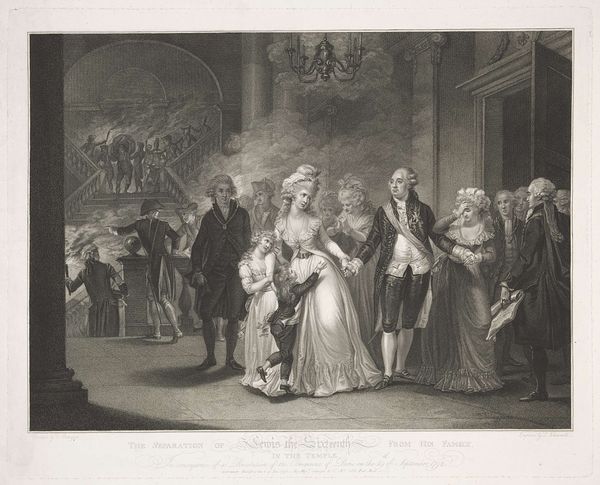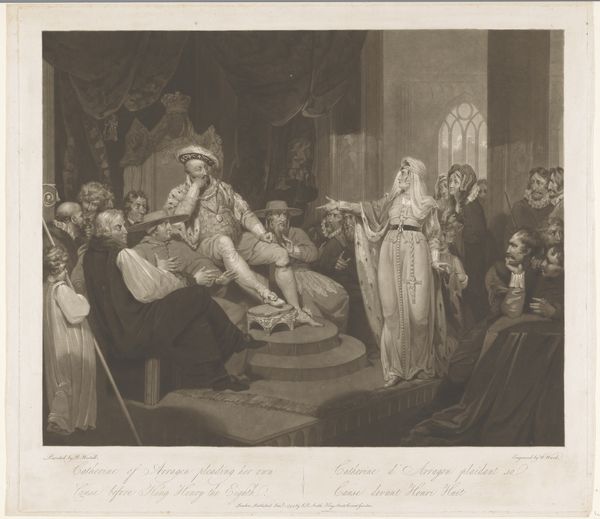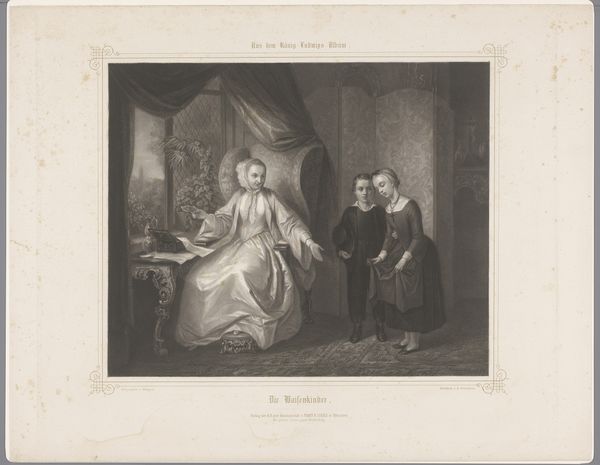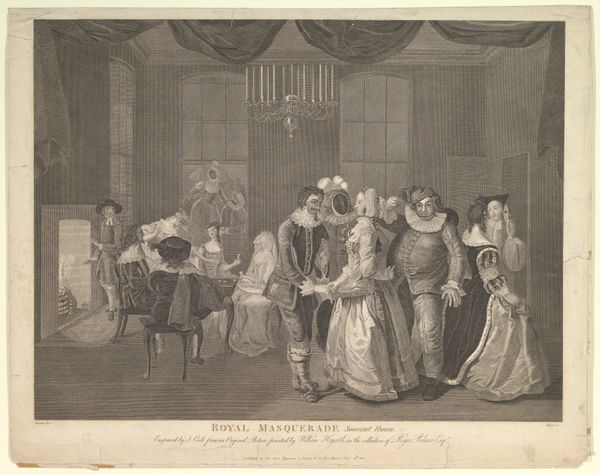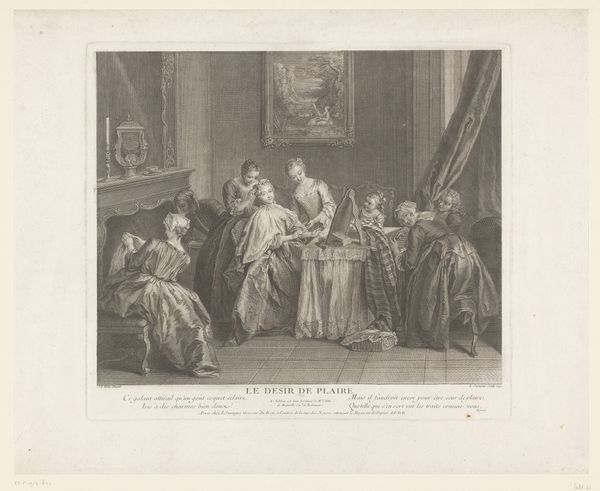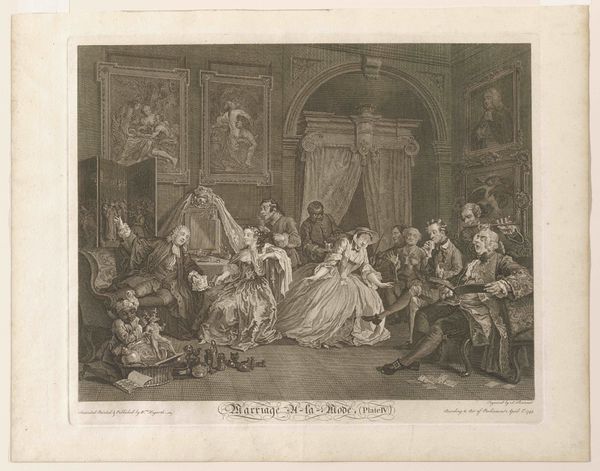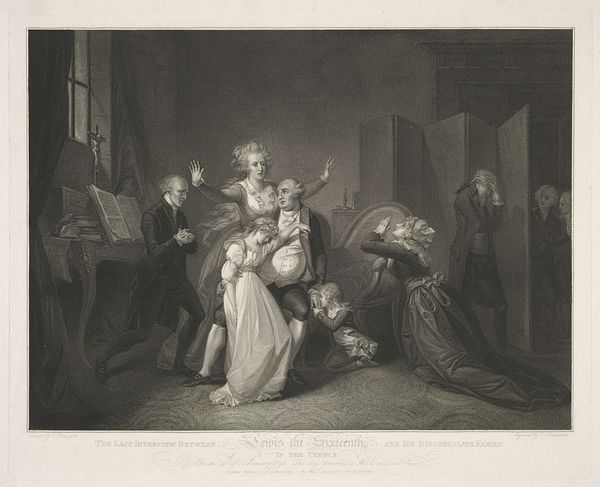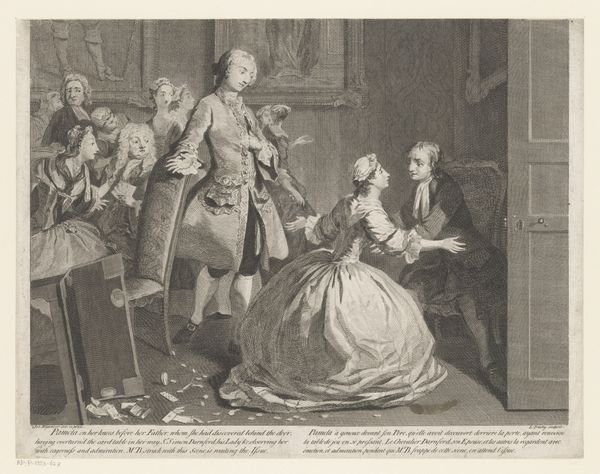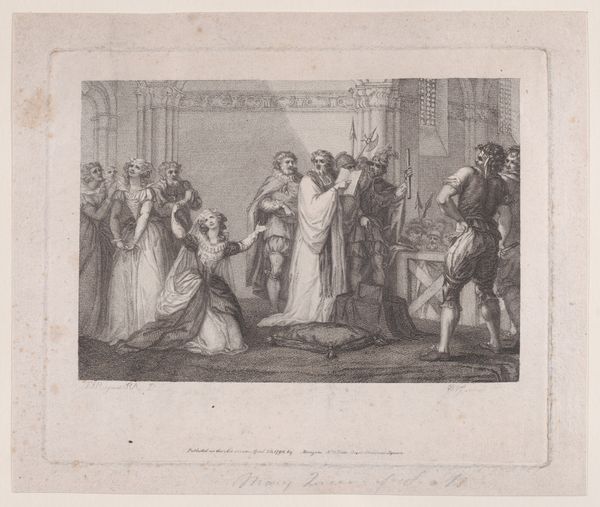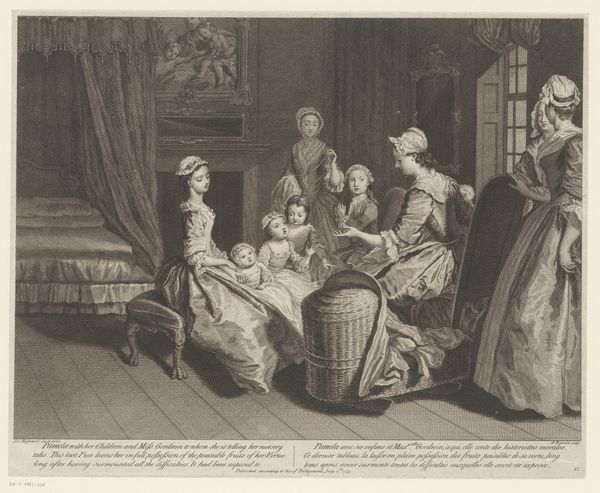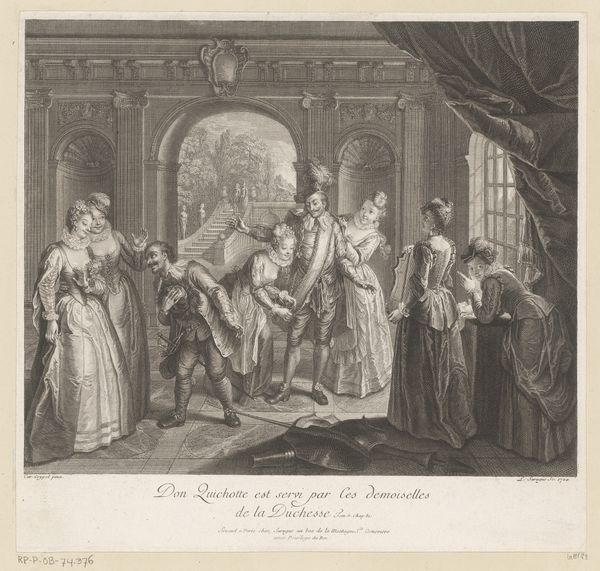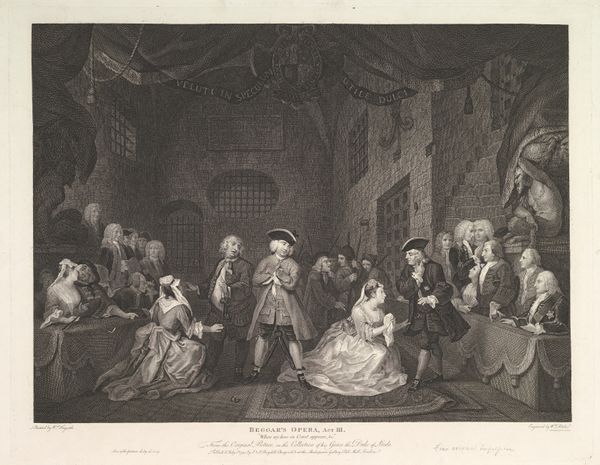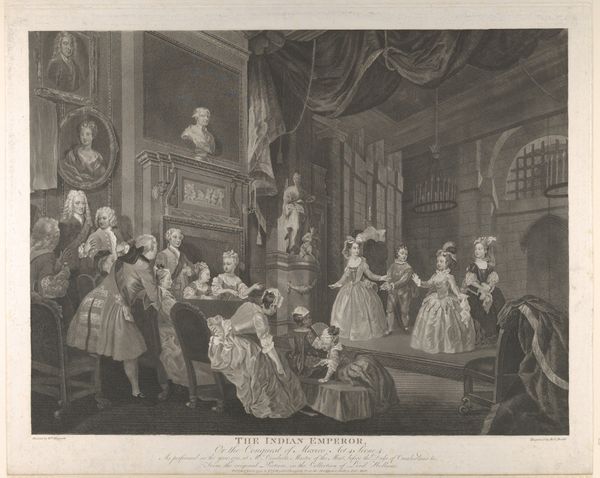
Queen Catherine, Cardinal Wolsey and Cardinal Campeius (Shakespeare, King Henry VIII, Act 3, Scene 1) 1796
0:00
0:00
drawing, print
#
drawing
#
narrative-art
# print
#
figuration
#
men
#
genre-painting
#
history-painting
Dimensions: Plate: 19 1/2 × 25 in. (49.5 × 63.5 cm) Sheet: 21 7/8 × 27 15/16 in. (55.5 × 70.9 cm)
Copyright: Public Domain
Editor: Here we have Robert Thew's 1796 print, "Queen Catherine, Cardinal Wolsey and Cardinal Campeius," based on a scene from Shakespeare's Henry VIII. The figures are beautifully rendered, and there's a real sense of drama in Catherine's gesture. How would you interpret the composition of this scene? Curator: The composition directs us through a series of contrasts. Note the opposition between the Queen’s forward-leaning gesture, expressive of confrontation and Wolsey's hesitant posture, head slightly bowed. Consider the architecture. How does the classical archway contrast with the more ornate bedchamber to the left? Editor: It’s interesting how you focus on the shapes and lines guiding the viewer’s eye. What about the use of light and shadow? It seems quite dramatic, enhancing the emotional tension. Curator: Indeed. Observe the way light articulates the Queen’s dress. The artist skillfully uses the medium to highlight her commanding presence. See how her luminosity draws us away from the supporting figures in darker hues and tones. Editor: So, you’re saying the arrangement of figures and light underscores her dominance in the scene. But how do you see the role of her attendants in conveying the emotion of the moment? Curator: Consider the structural function. Although important for narrative context, tonally their value is much flatter compared to other formal qualities. In essence, we see their purpose serves as supporting architecture, structurally providing tonal counterpoint to other narrative subjects within the visual space. Editor: That’s a different way of considering it! It's less about who they are in the story and more about how they work within the structure of the print. Curator: Precisely. By analyzing how these formal elements interact, we can better understand the work's overall effect, apart from the narrative it depicts. Editor: It makes me appreciate the choices the artist made to guide our interpretation. Focusing on composition reveals a totally new dimension to interpreting the print.
Comments
No comments
Be the first to comment and join the conversation on the ultimate creative platform.
